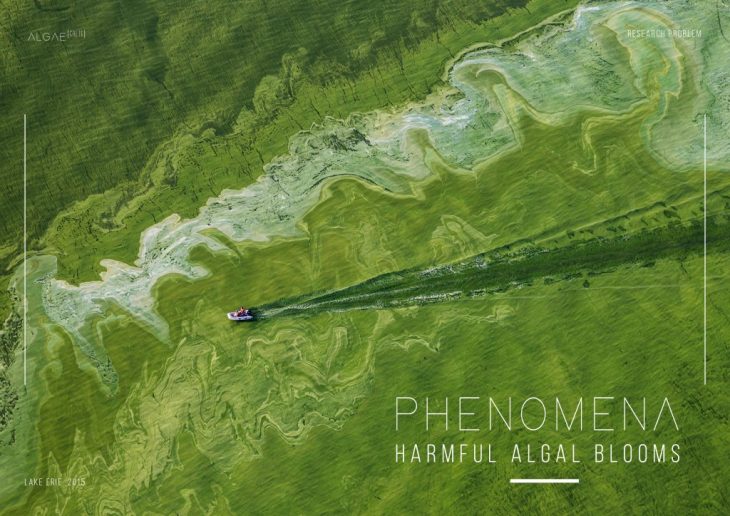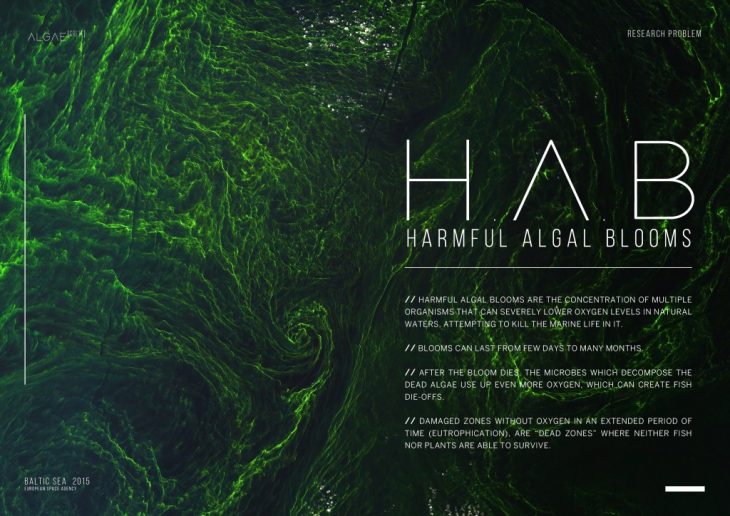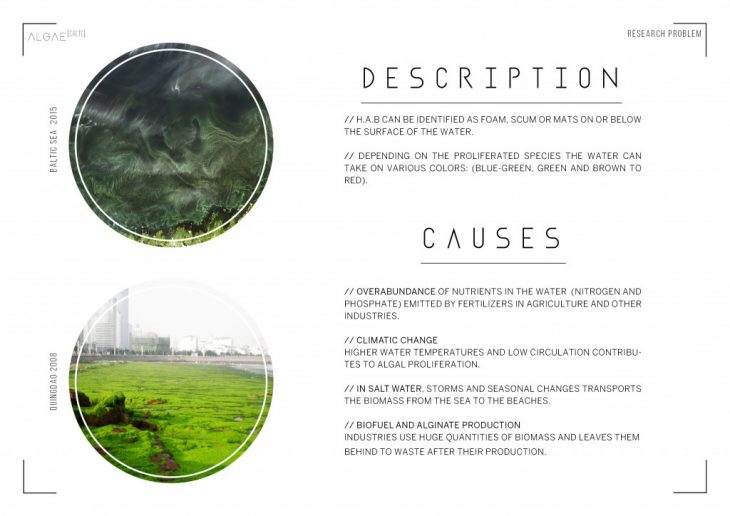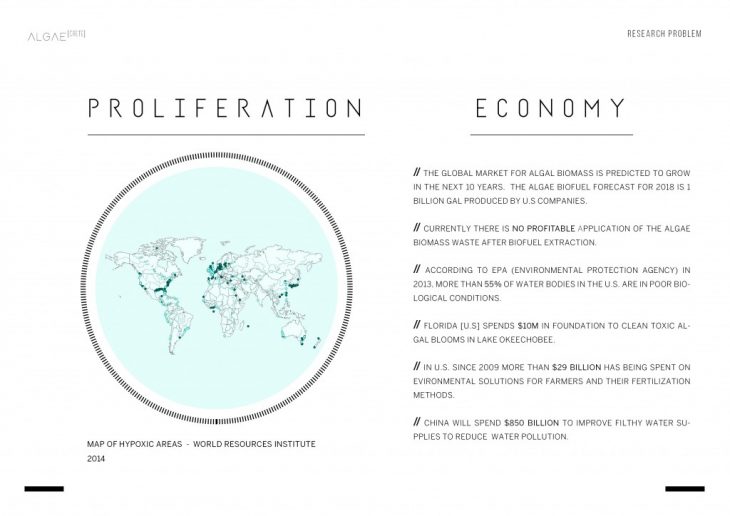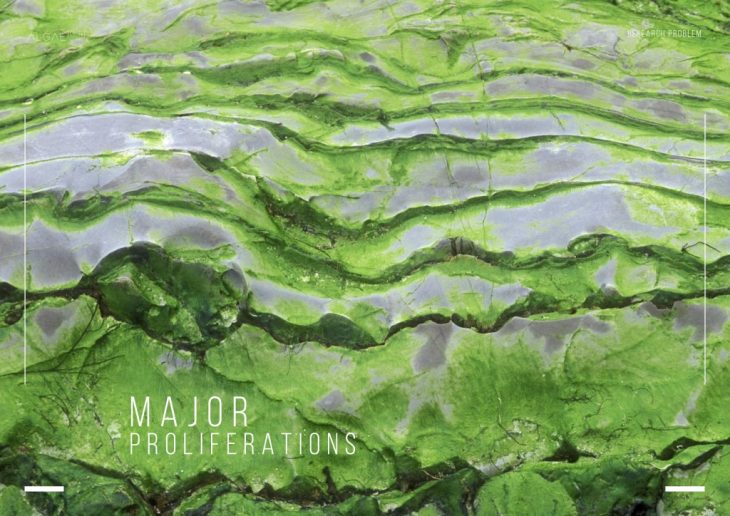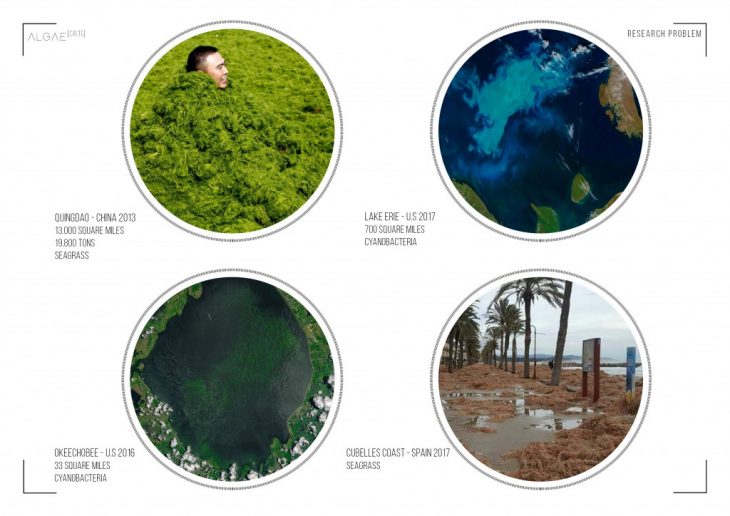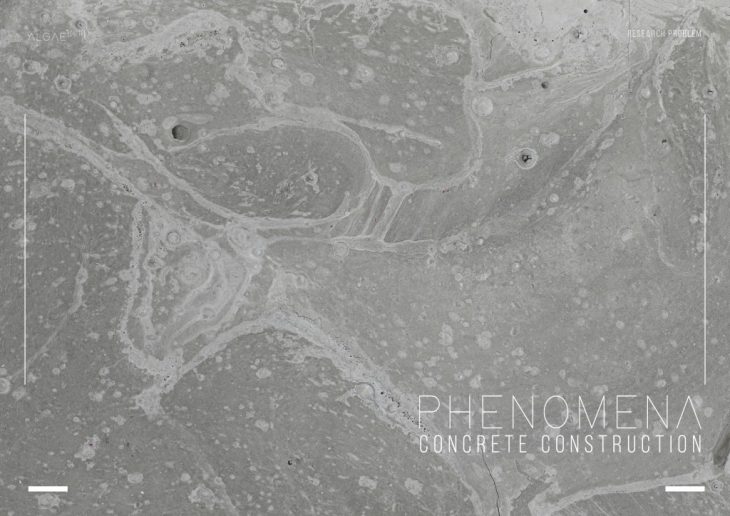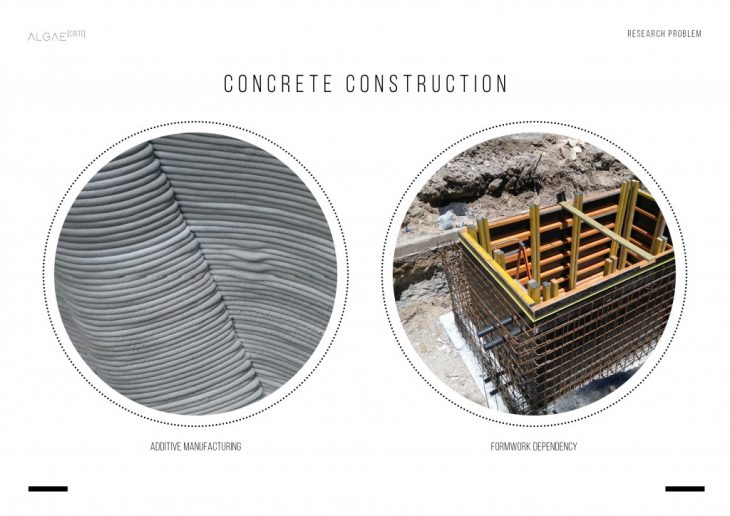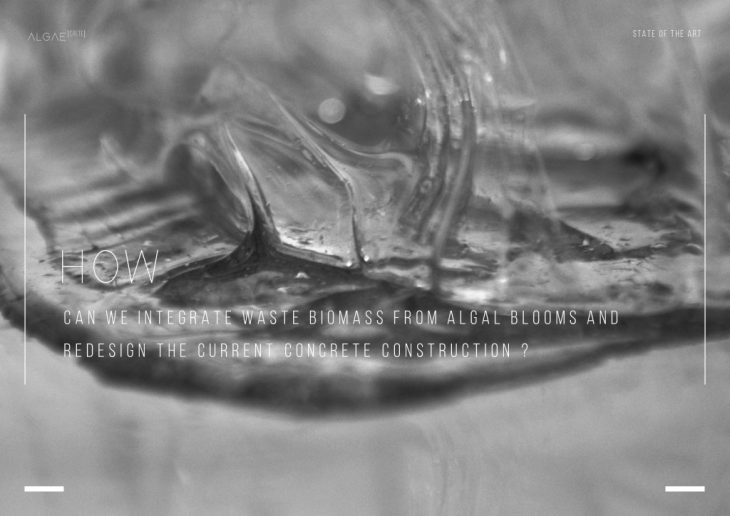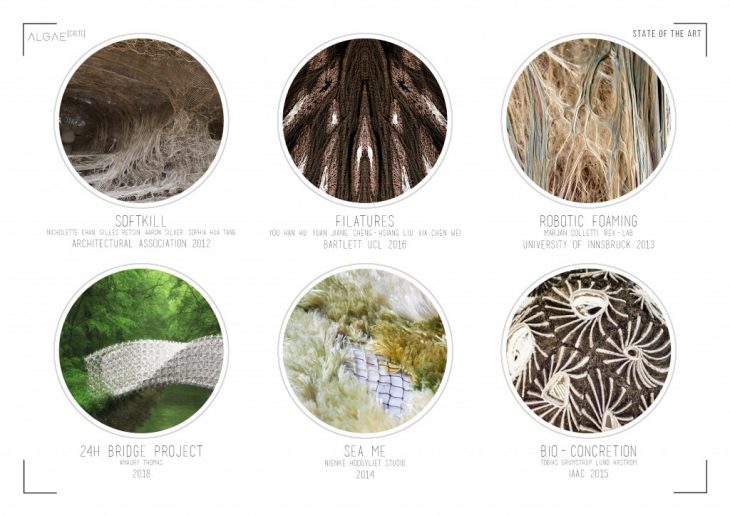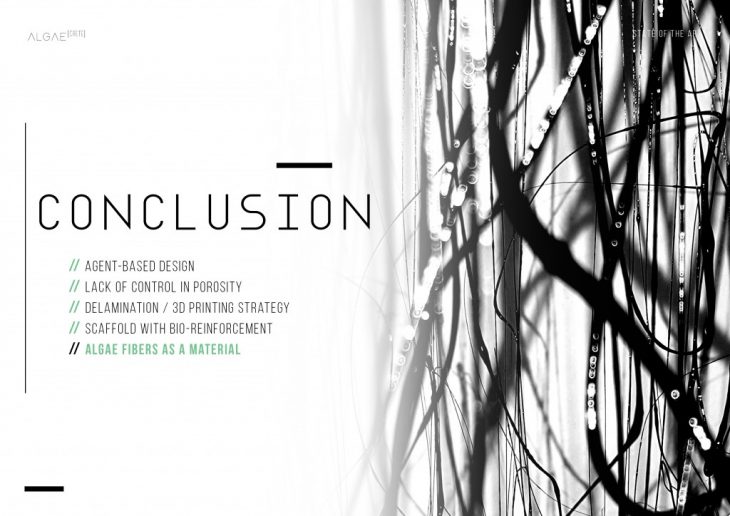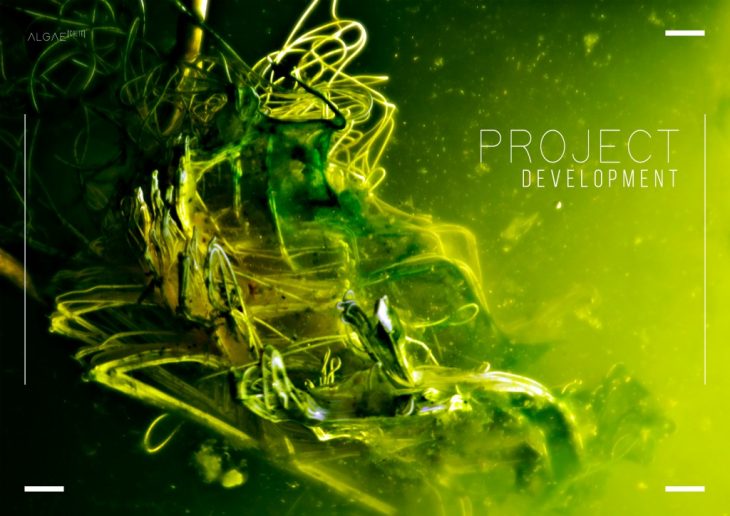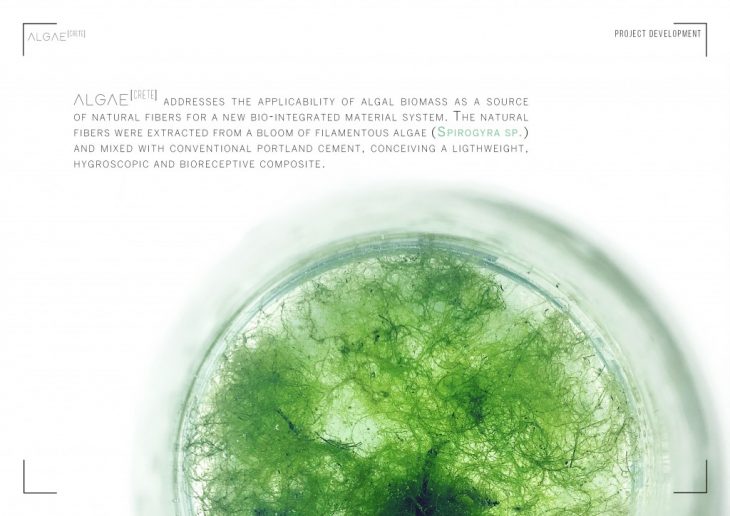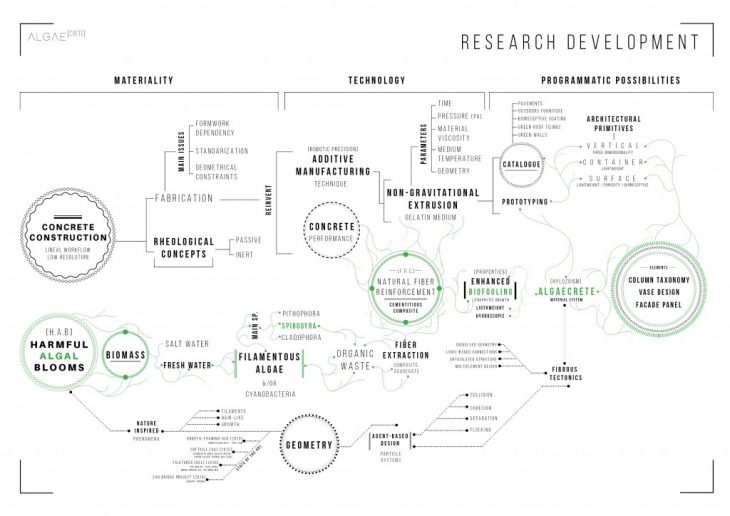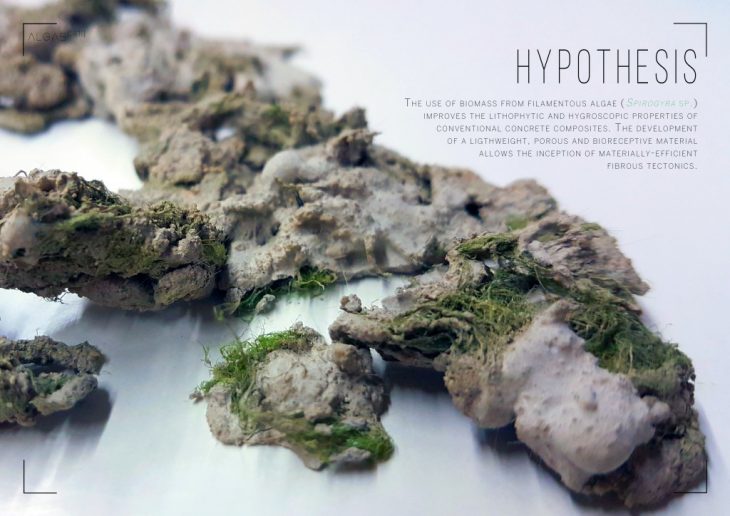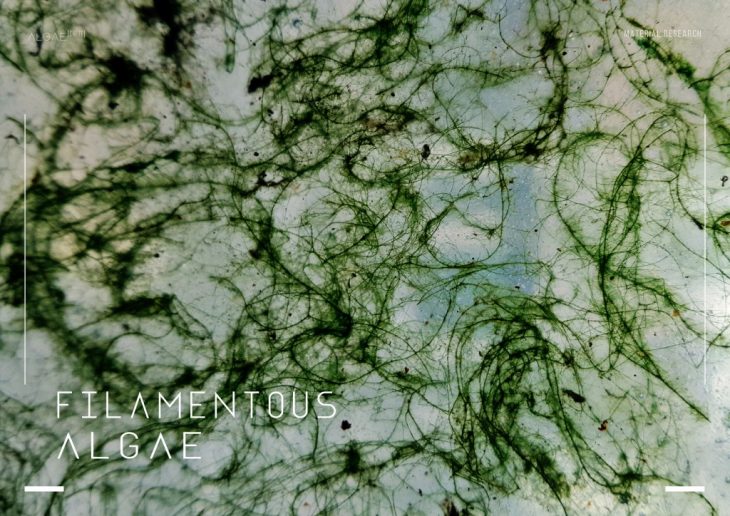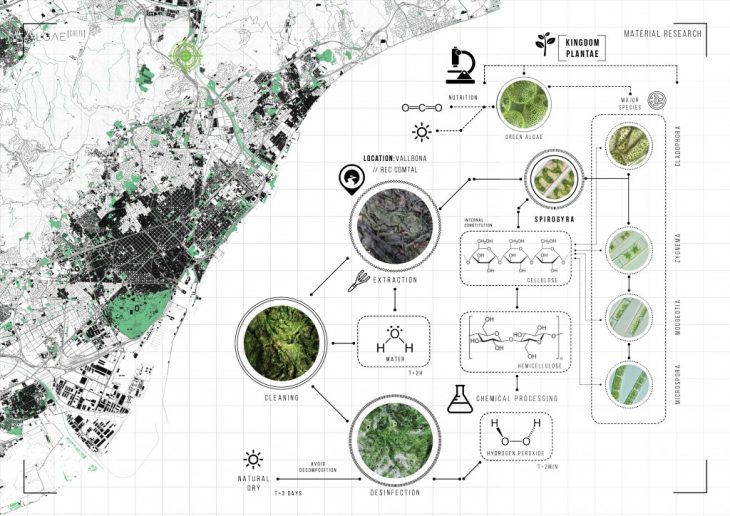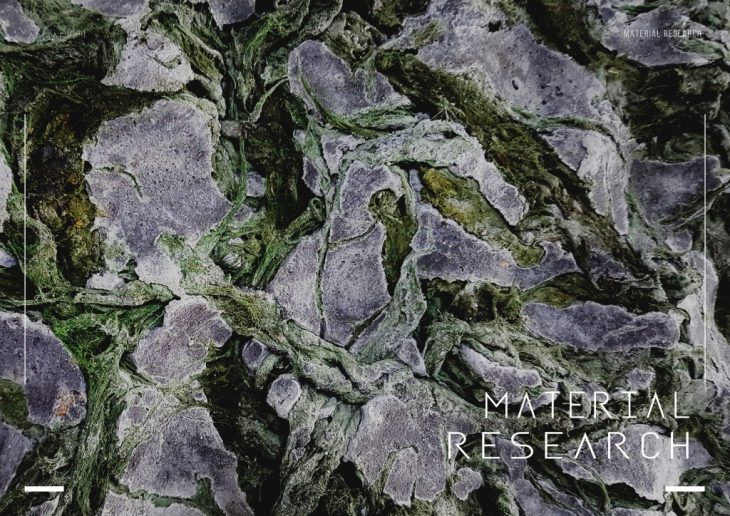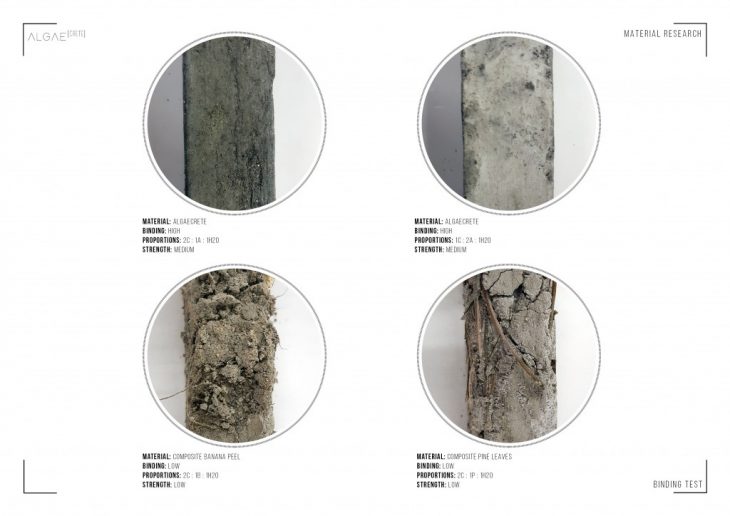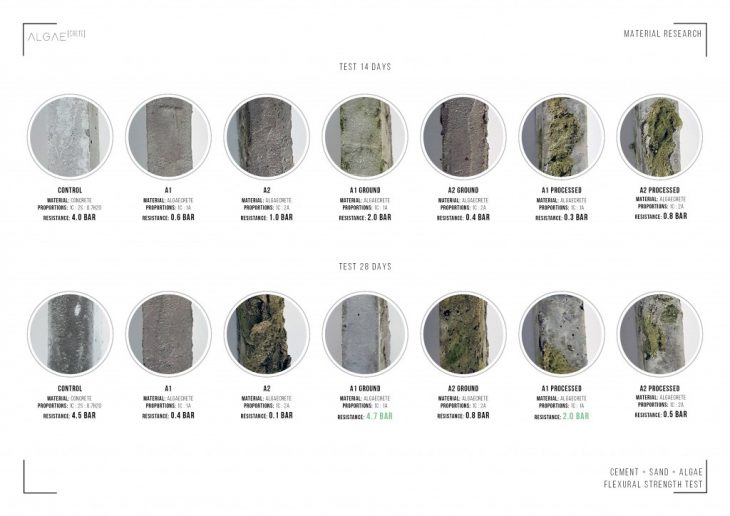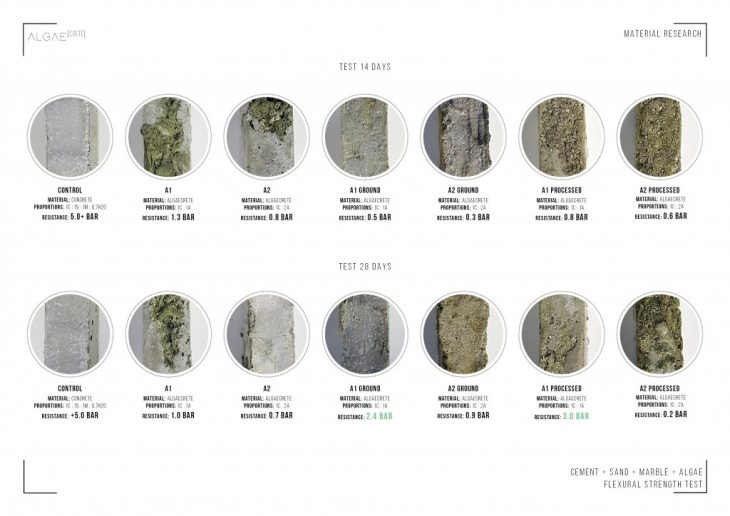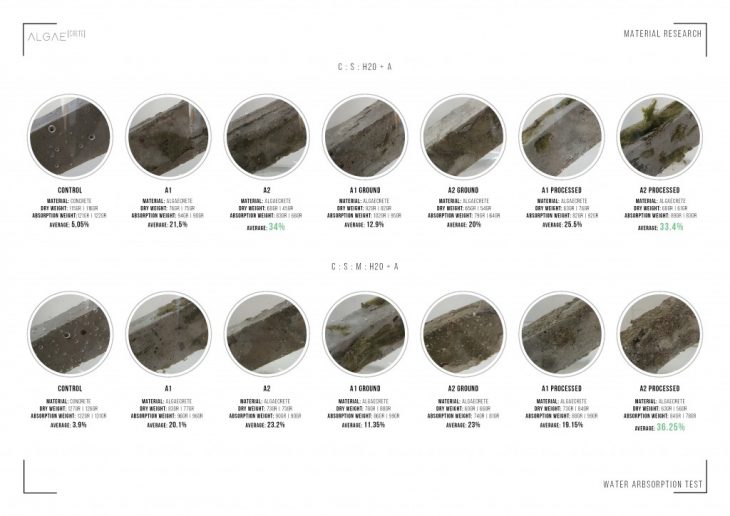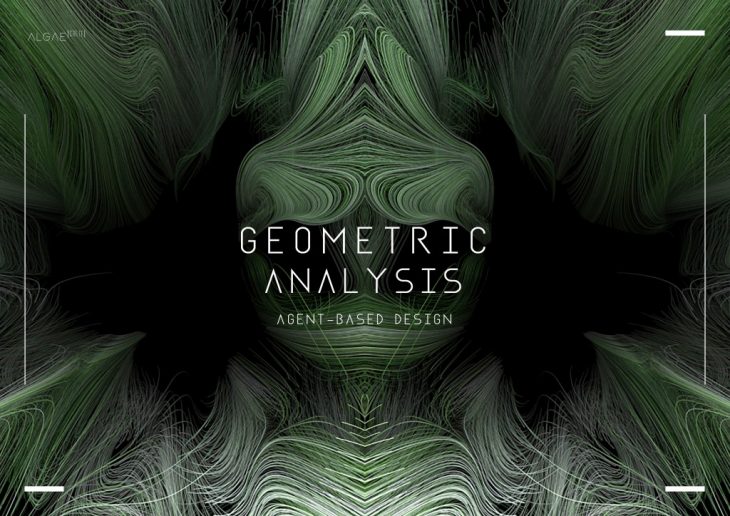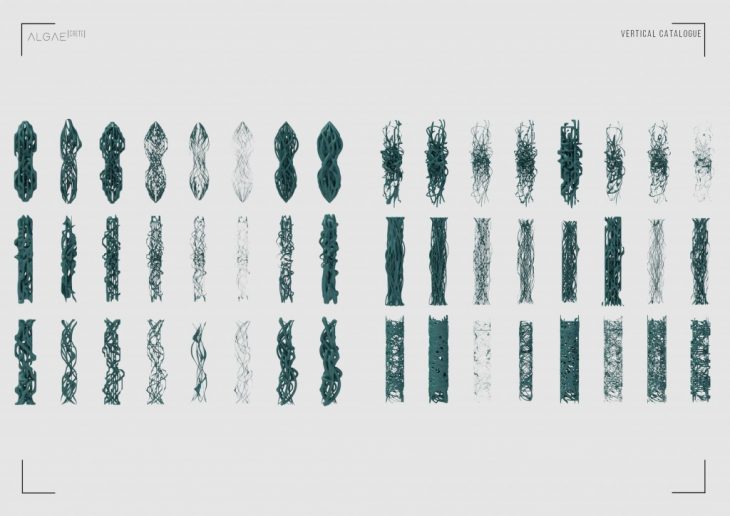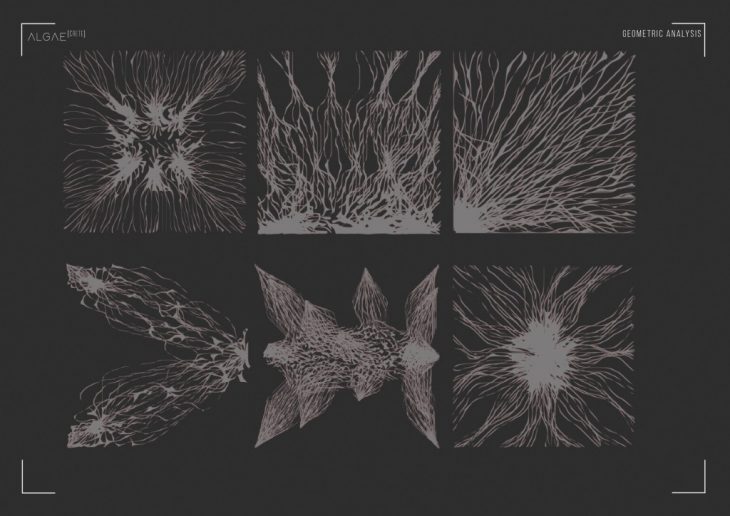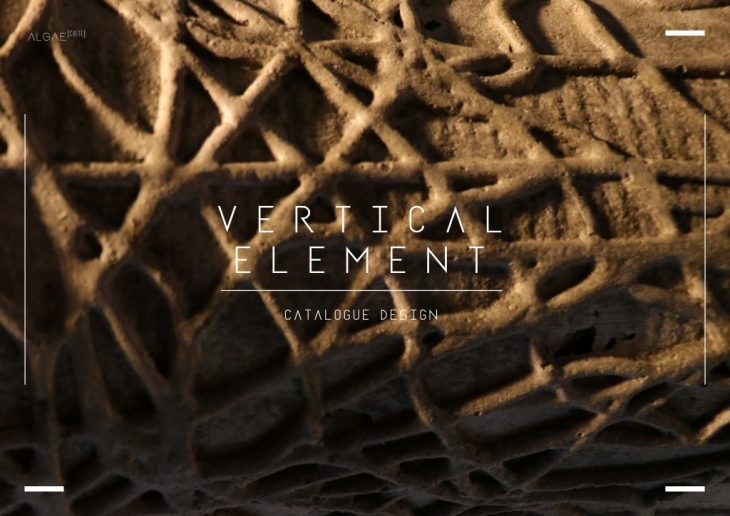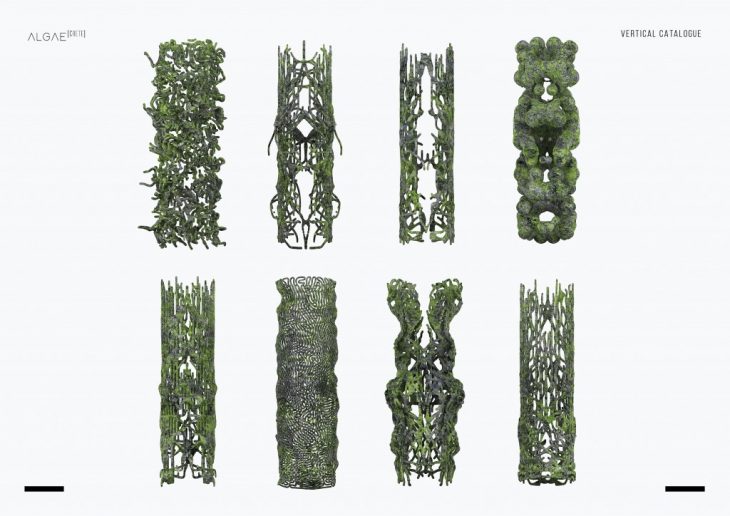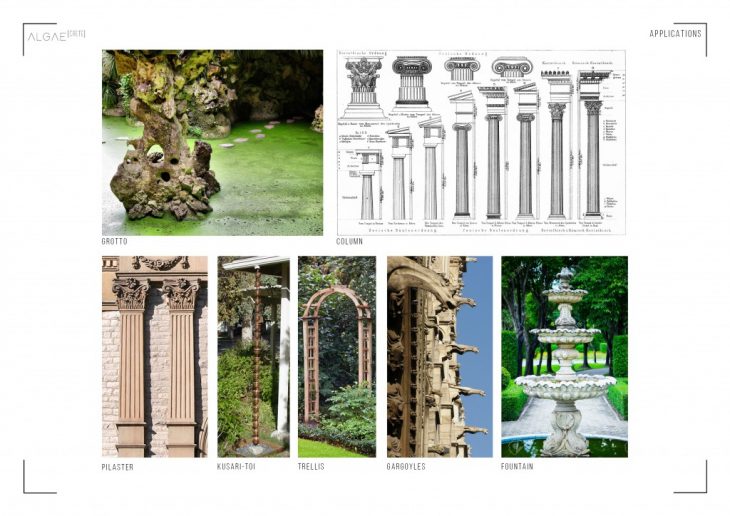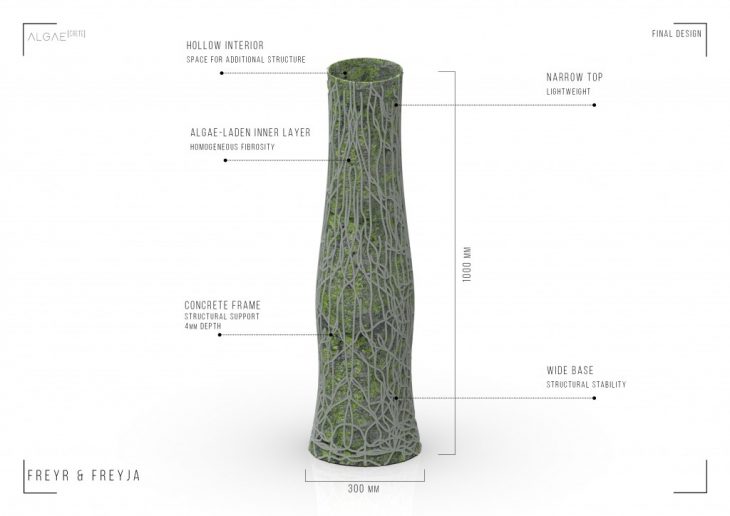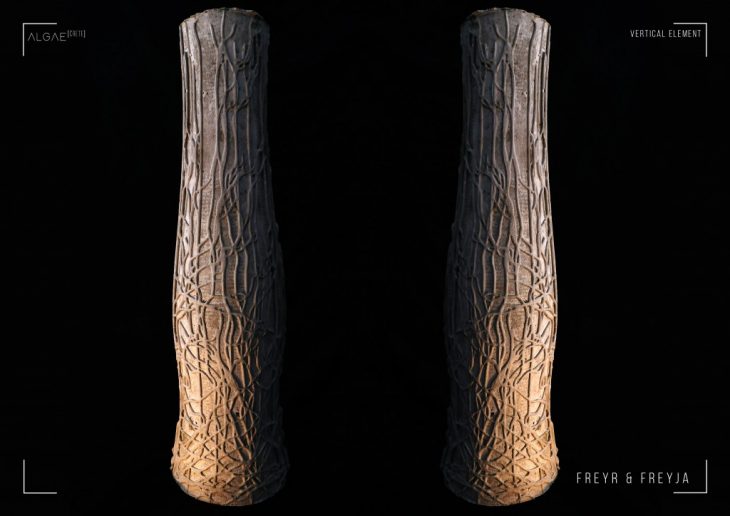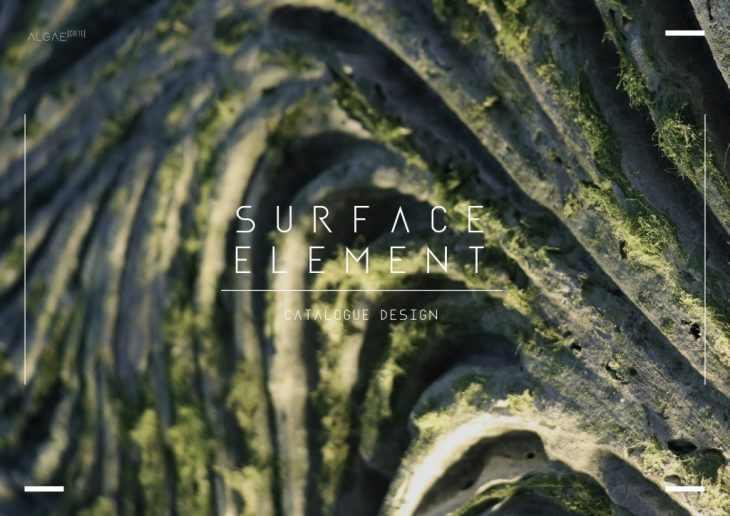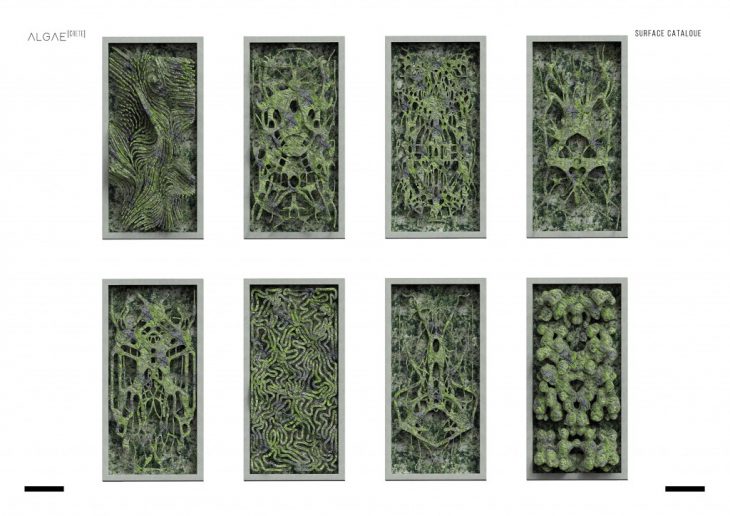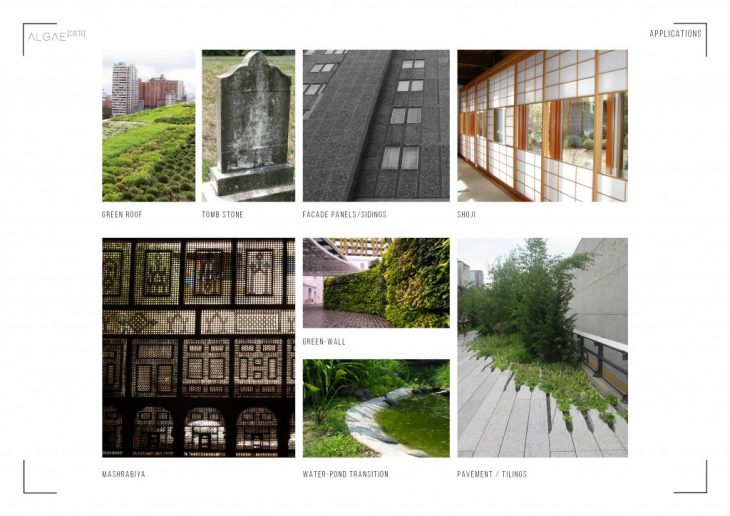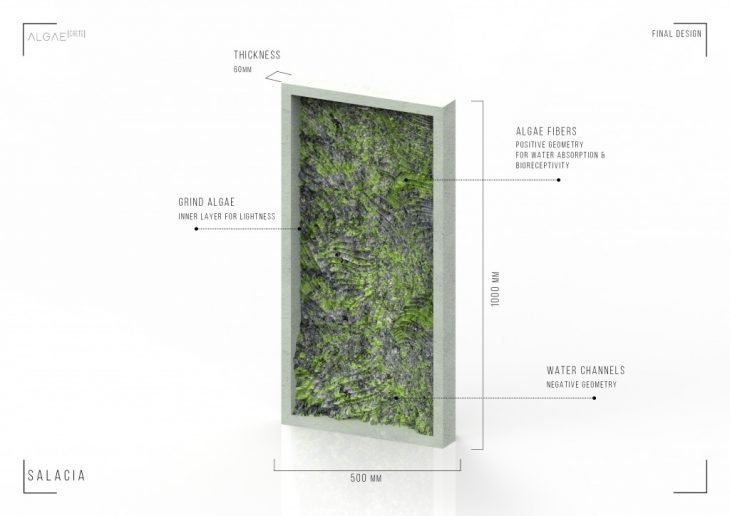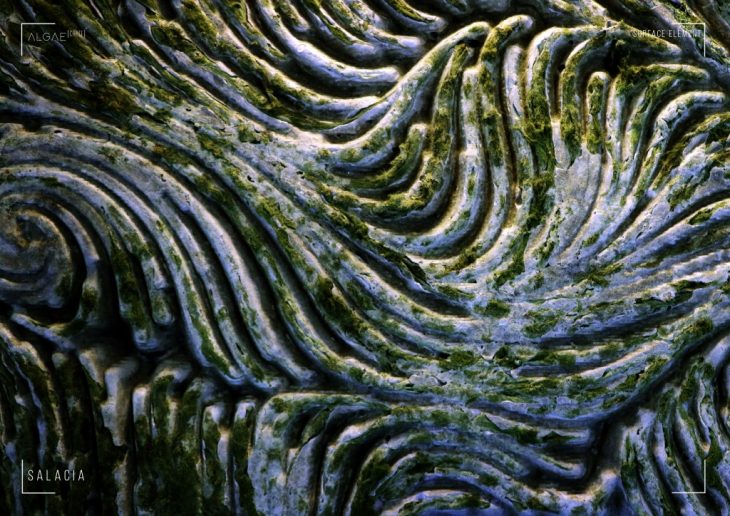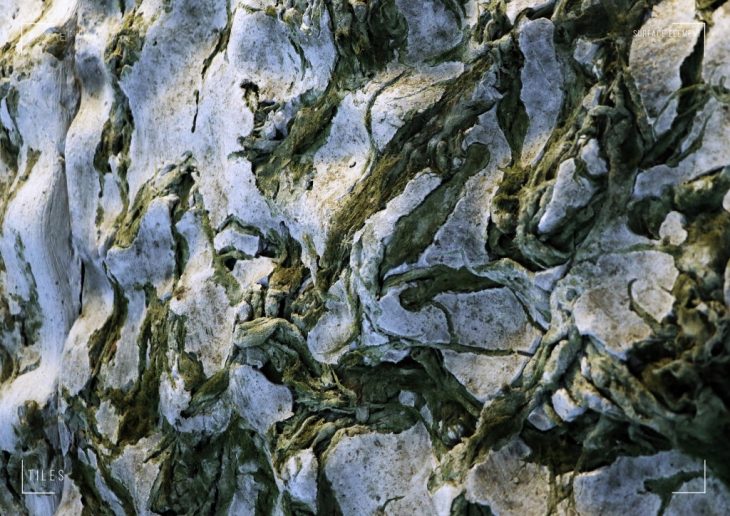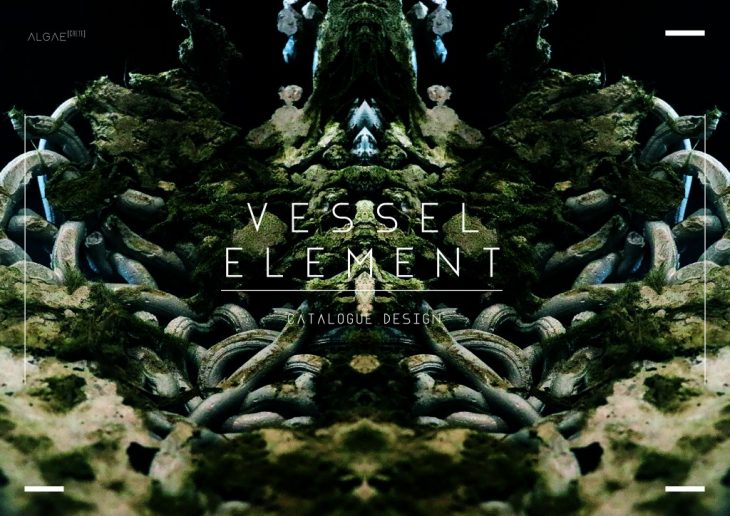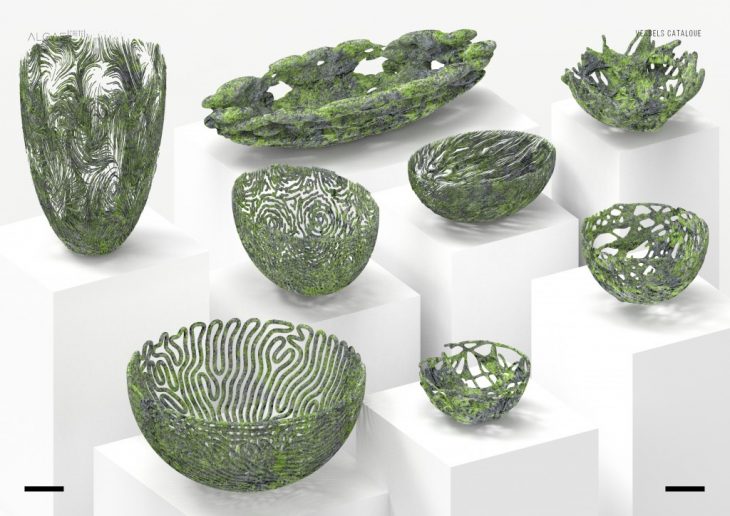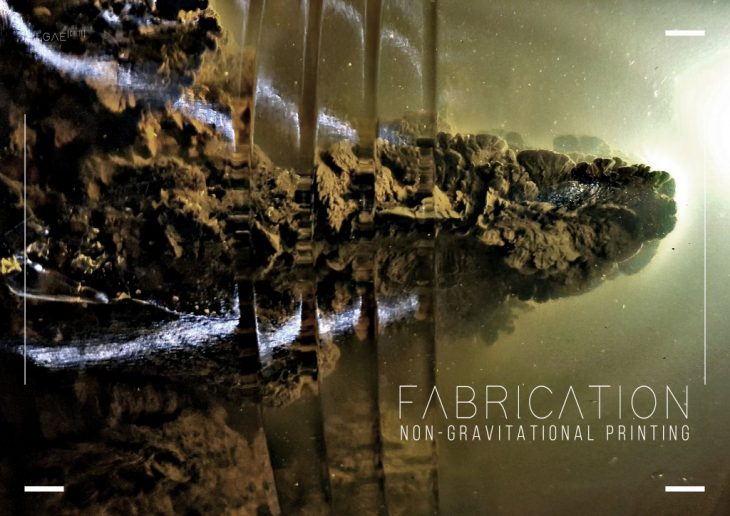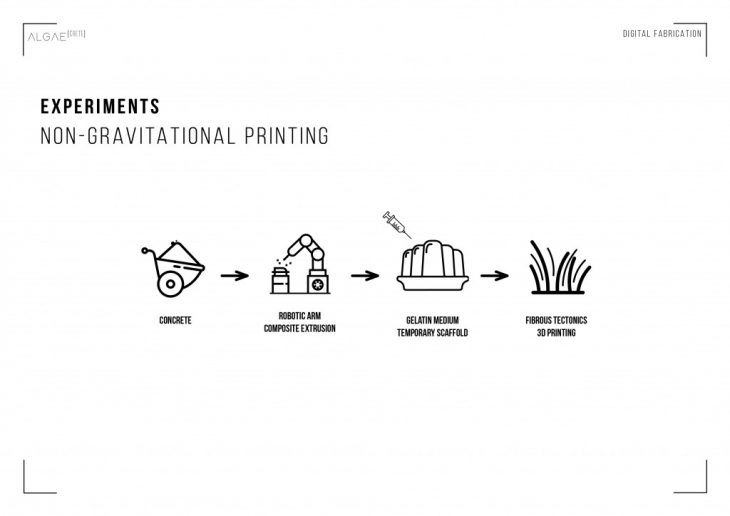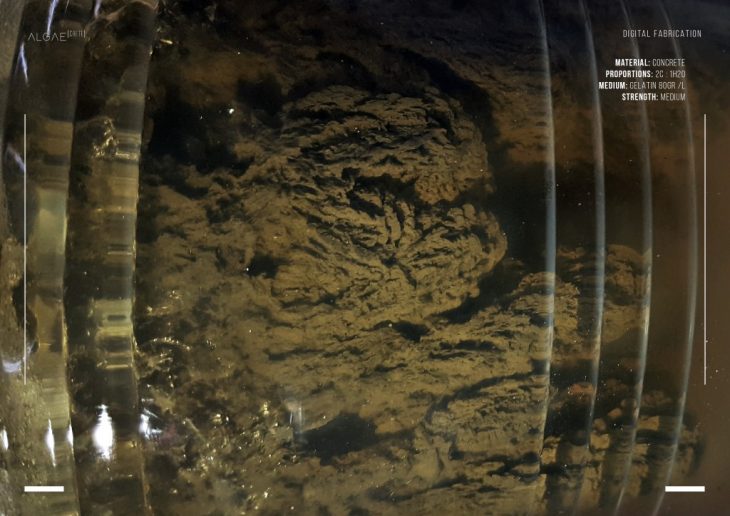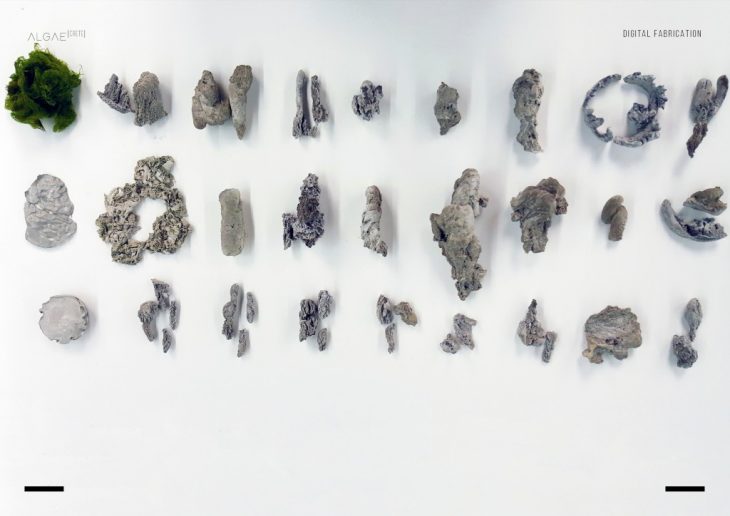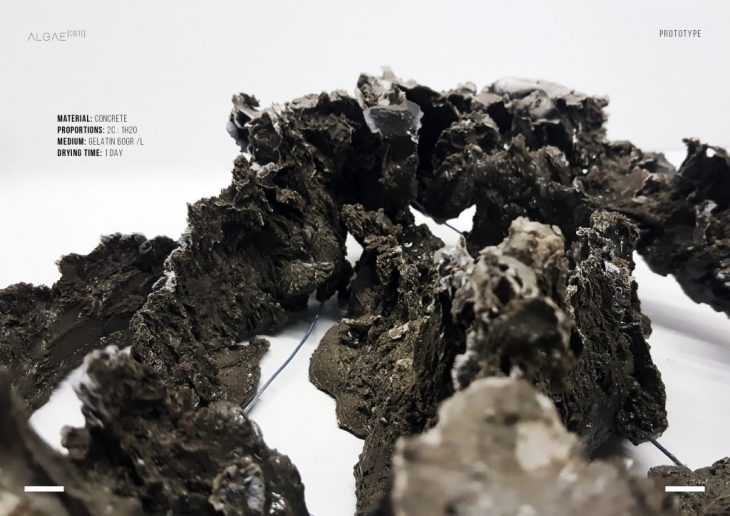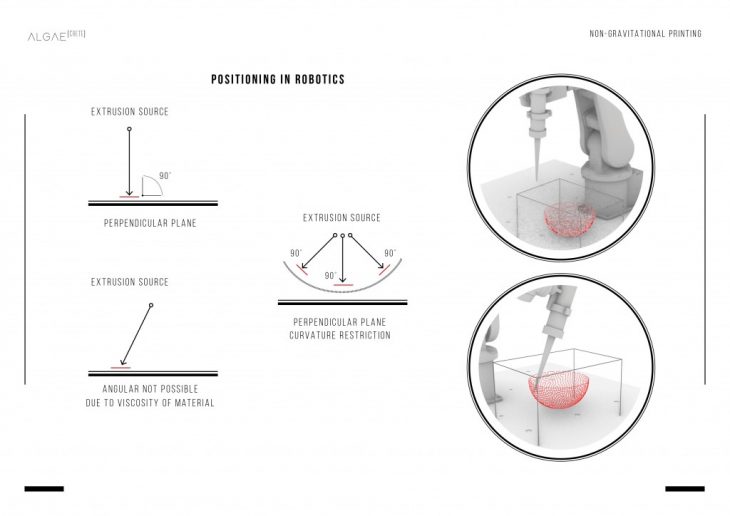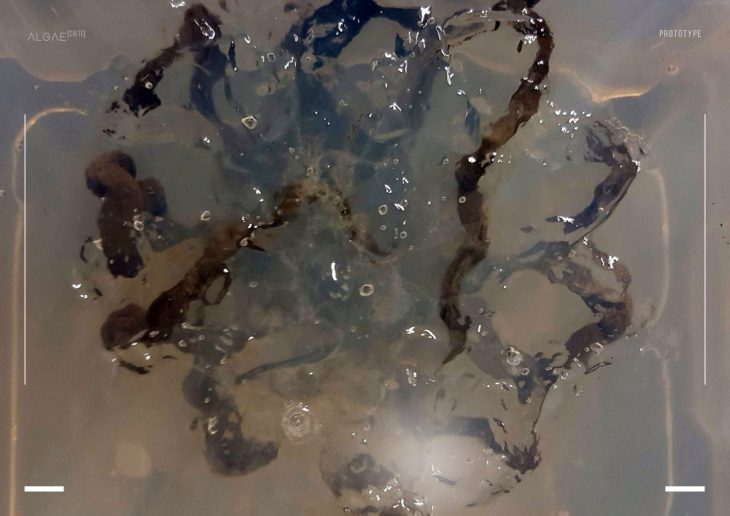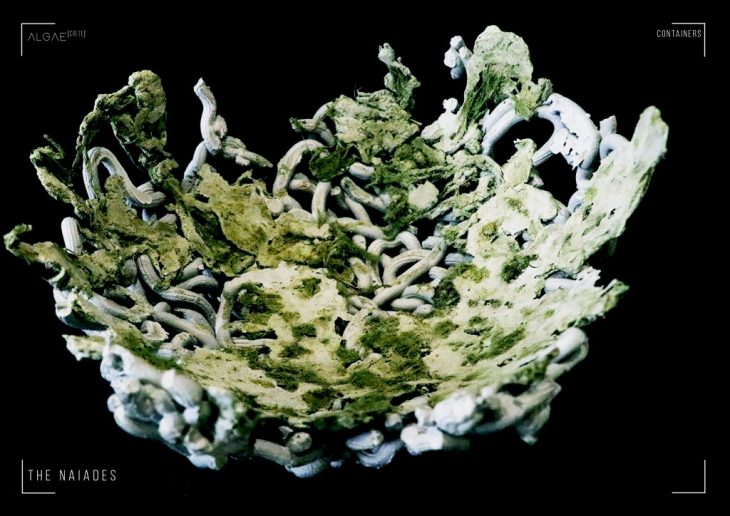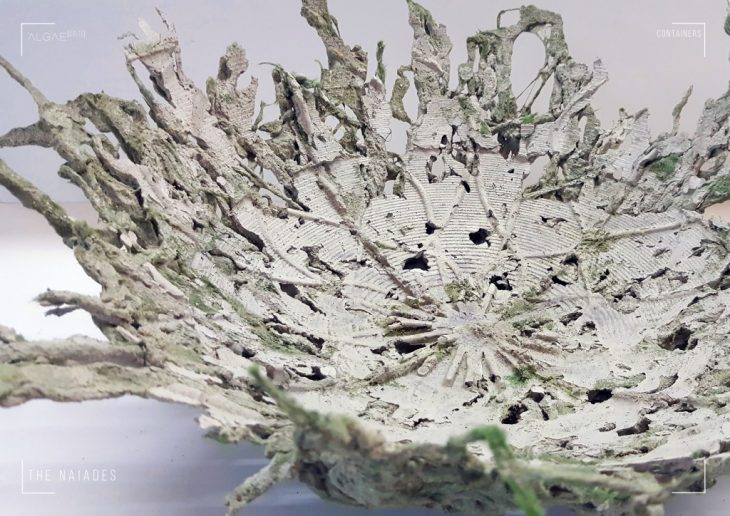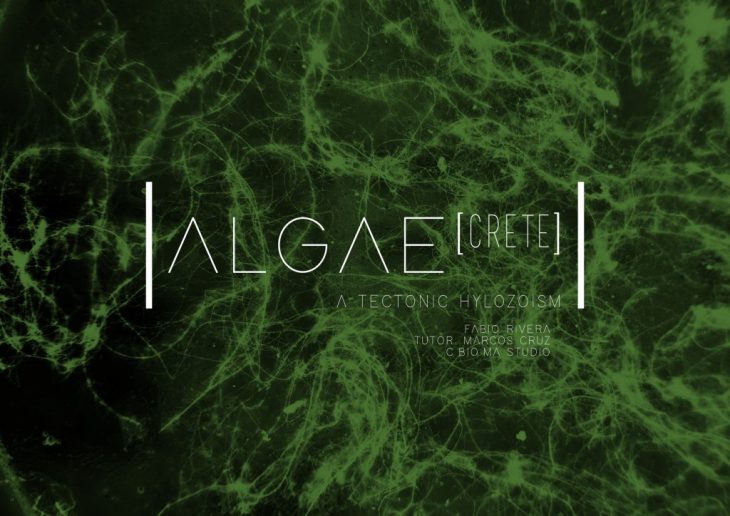
The growing interest to develop biodegradable materials has pushed the boundaries of their applications in many sectors. The progression of climate change requires pertinent actions in order to mitigate its dangerous effects in the world’s ecological macrosystem. Harmful algal blooms (HAB) are one of the consequences of global warming that directly threatens marine life by critically depleting the oxygen levels in bodies of water.
In the need for sustainable alternatives, many industries are now considering algae-based materials due to its many properties, high performance and availability. This research proposes the use of biomass from filamentous algae (Spirogyra sp.) as a lightweight, hygroscopic and bioreceptive reinforcement for cementitious composites, to derive materially-efficient fibrous constructs.
The proposal emerges from computational form-finding techniques of multi-agent algorithmic strategies, that embeds and redistributes matter in a network of self-organisational tectonic structures. The final prototypes are presented as a catalogue of decontextualized architectural primitives, based on the abstraction of fundamental geometrical elements for multiple programmatic possibilities: The Verticality, The Surface and The Vessel. Such Elements are designed and conceived through different computational and fabrication methods: The surface and verticality by traditional casting and the vessels through non-gravitational printing.
This novel way of articulated materiality allows the extrusion of three-dimensional continuous and porous elements, that ultimately conceives a biopoietic scaffold capable of hosting its own cryptogamic ecosystem. ALGAE[CRETE] acts as an artificial ecology that triggers the resurgence of marine life in places that requires it, and strategically responds to the pertinence of improving the environmental quality of highly-polluted urbanospheres.
Keywords:
Natural fibers, Biocomposite, Bio-receptive, Filamentous Algae, Spirogyra, Fiber Reinforced Concrete, lightweight.
